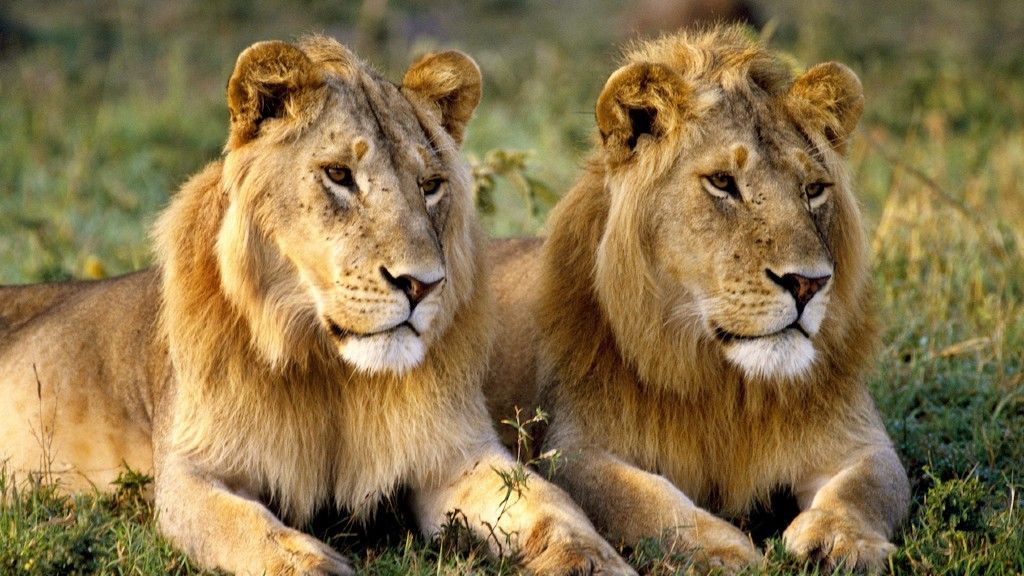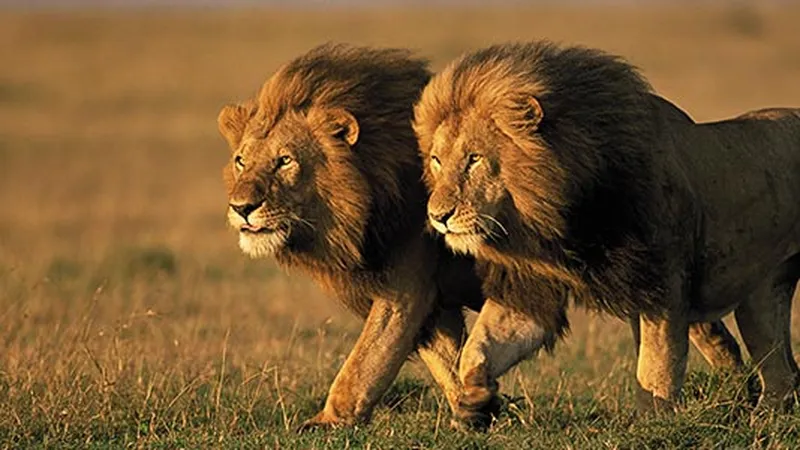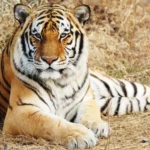In the vast savannas of Africa and the dense forests of Asia, there roams a majestic creature that commands both fear and admiration – the lion, aptly crowned the “King of the Jungle.” With its powerful build, golden mane, and piercing gaze, the lion stands as a symbol of strength, courage, and royalty. In this essay, we delve into the world of the lion, exploring its biology, behavior, cultural significance, and the challenges it faces in the modern world.

At the heart of the lion’s identity lies its physical prowess. Lions are large carnivores, belonging to the family Felidae and the genus Panther. Among the big cats, they are second in size only to the tiger. Adult males, known as “lions,” can weigh up to 250 kilograms (550 pounds) and measure over 2 meters (6.5 feet) in length, excluding the tail. One of the most distinctive features of male lions is their magnificent mane, which varies in color from blond to black and serves as a symbol of dominance and maturity.
Despite their formidable appearance, lions are not solitary creatures like some of their feline relatives. Instead, they exhibit a unique social structure centered around prides, consisting of related females and their offspring, along with a few resident males. This social cohesion is crucial for their survival, enabling them to hunt cooperatively, defend territory, and rear their young more effectively.
Hunting is primarily carried out by the lionesses, who are highly skilled and coordinated hunters. Their preferred method is to ambush prey by utilizing cover and stealth, often targeting large herbivores such as zebras, wildebeests, and buffalo. Once a kill is made, the males typically dominate the feast, asserting their authority as the protectors of the pride.
The cultural significance of the lion spans across civilizations and epochs. In ancient times, it was revered as a symbol of strength and power by cultures such as the Egyptians, who depicted lion-headed deities like Sekhmet and worshipped the lioness-headed goddess, Bastet. In Western culture, the lion has long been associated with royalty and nobility, adorning coats of arms, flags, and emblems of monarchs and rulers.
Furthermore, the lion has a prominent place in literature, folklore, and mythology, often portrayed as a noble and regal figure. From Aesop’s fables to the tales of C.S. Lewis’s Narnia, the lion embodies qualities of leadership, wisdom, and courage, serving as both a protagonist and a symbol of moral virtue.
However, despite its revered status, the lion faces numerous threats to its survival in the modern world. Habitat loss, human-wildlife conflict, poaching, and trophy hunting have taken a heavy toll on lion populations across Africa and Asia. According to the International Union for Conservation of Nature (IUCN), African lion populations have declined by approximately 43% over the past two decades, with fewer than 23,000 individuals remaining in the wild.

Efforts to conserve and protect lions are underway through various initiatives, including habitat preservation, community-based conservation programs, and anti-poaching measures. Additionally, ecotourism has emerged as a sustainable alternative that generates revenue for local communities while promoting the conservation of lions and their habitats.
In conclusion, the lion is more than just a magnificent predator; it is a symbol of strength, courage, and resilience. Its presence in the natural world enriches our collective consciousness and reminds us of the beauty and diversity of life on Earth. As stewards of this planet, it is our responsibility to ensure that future generations continue to marvel at the sight of these majestic creatures roaming freely in the wild. Only then can we truly honor the legacy of the lion as the rightful king of the jungle.


